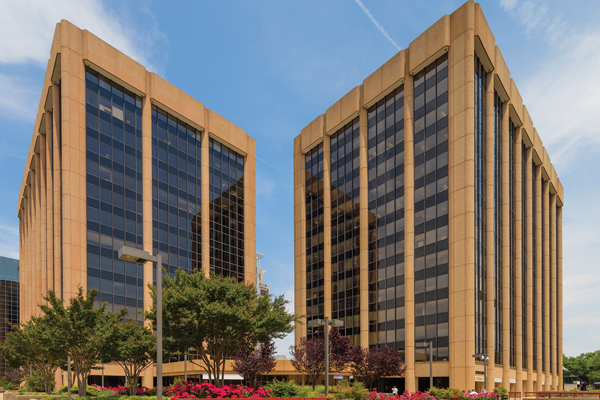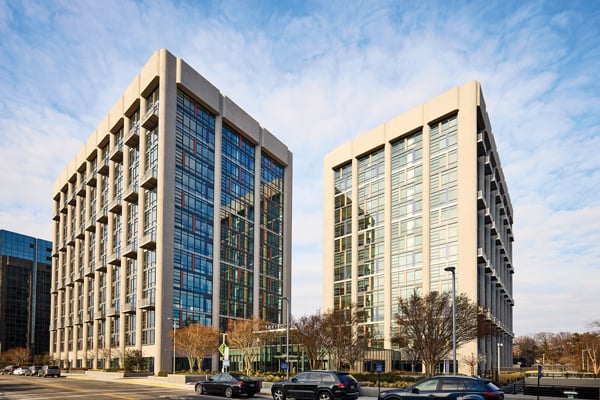Federal Incentives Could Help Spur Property Conversions

Struggling office properties are prime candidates for adaptive reuse into residential buildings.
Converting old and underutilized office properties into residential buildings may not be a new trend in commercial real estate. However, high office vacancy rates, coupled with a housing shortage in many communities, are forcing elected officials and policymakers to focus on adaptive reuse to address both problems.
But the challenges inherent in property conversions have kept them from being undertaken on a broader scale across the country, or in greater numbers in communities that might otherwise benefit from repurposing stranded commercial real estate assets. Now, NAIOP and a coalition of national real estate organizations are urging Congress to look at creating federal incentives that could spur adaptive reuse and property conversions. In fact, it is one of NAIOP’s top federal priorities for 2023.
Housing Shortage Meets Office Downturn
Two broad societal factors are raising the profile of adaptive reuse. One is the severe shortage of affordable housing across the nation. According to the Pew Research Center, a growing share of Americans say the lack of affordable housing is a significant problem in their communities. In 2020, 46% of American renters spent 30% or more of their income on housing, including 23% who spent at least 50% of their income on rent.


A before-and-after look at the exterior of Park+Ford, a 1980s-era office property in Alexandria, Virginia, that was recently converted into multifamily housing. It was profiled in the Spring 2022 issue of Development magazine. One of NAIOP’s top federal priorities for 2023 is urging Congress to create incentives for more adaptive-reuse projects like Park+Ford. Top, JLL Capital Markets; bottom, Kip Dawkins Photography
The second is the aftermath of the pandemic and the resulting work-from-home trend. It may become a permanent feature of labor markets, and it is directly impacting office vacancy rates. A study by the National Bureau of Economic Research concluded that by the end of 2022, 30% of all workdays were at home. With fewer workers in the office at any one time, businesses require less space. Office market vacancy rates in the third quarter of 2022 were the highest since 1993, rising to more than 17% nationally. Absorption of office space will continue to slow in 2023 amid economic uncertainty, according to the NAIOP Research Foundation’s Office Space Demand Forecast for the fourth quarter of 2022.
The persistence of underutilized and largely vacant office buildings can be particularly troublesome for local governments, especially in cities with high concentrations of office buildings in downtowns. The depressed asset values of vacant and underutilized commercial buildings negatively impact state and local budgets by generating less revenue from property taxes. A study completed in November 2022 by researchers at the NYU Stern School of Business and Columbia University estimated a $413 billion reduction in real estate asset values from continued remote work trends.
Fewer people coming to the office also means less economic activity on a daily basis for the shops and restaurants that normally serve these workers, with a resulting reduction in sales taxes from these businesses. Less revenue translates into a reduction in services for many communities, which could suffer higher rates of crime, homelessness and other social ills as a result. Additionally, a decline in activity in these areas also contributes to the perception that they are unsafe.
The conversion of underutilized commercial buildings into residential use, in both cities and suburban areas, seems to be a wise and obvious solution. It could help address a supply shortage of housing while preventing the downward economic spiral that results when vacant office buildings contribute to depopulated business centers. Moreover, repurposing an existing structure has added environmental benefits, since the building is essentially being recycled. This results in fewer greenhouse gas emissions and a smaller carbon footprint. Yet despite these advantages, high property conversion costs, city zoning and building codes, and the higher financing costs of riskier adaptive-reuse projects have prevented these from being utilized on a larger scale.
Governments Launch Incentives
Several states and localities have enacted policies meant to reduce regulatory barriers to property conversions for affordable housing and provide financial incentives to offset the high costs. For example, legislation passed in California last year would open districts zoned for commercial use to residential conversions and streamline the entitlement process for affordable housing projects. The city of Chicago has moved aggressively in this direction, offering tax credits and incentives to repurpose high-vacancy buildings in its downtown financial district. And at the beginning of this year, New York City Mayor Eric Adams unveiled recommendations from a city-led task force to facilitate the conversion of underutilized space into new housing.
Action by the federal government would help increase and accelerate the pace and number of these property conversions. Legislation introduced in the last Congress by Senator Debbie Stabenow (D-Michigan), modeled on the historic-preservation tax credit, would provide a 20% credit for qualified property conversion expenditures. A building would have to be 25 years old at the time of conversion and provide at least 20% of the resulting units for affordable housing to qualify. The real estate community suggested changes to the legislation, including expanding the category of properties eligible for the credit, extending the incentive to real estate investment trustees and reducing the level of conversion expenditures required, among others. The bill was referred to the Senate Finance Committee, but no action was taken prior to Congress adjourning.
With the new Republican majority in the House of Representatives and the Senate in Democratic hands, many expect legislative gridlock to predominate through the next election. Certainly, legislation will have to be strongly bipartisan at a minimum. Getting the federal government to provide financial and tax-related incentives for adaptive reuse will not be easy. Generally, Republicans tend to be wary of tax credits that they see as interfering with the operation of the free market. For their part, Democrats are suspicious of tax incentives for businesses unless stringent conditions are imposed. Both sides will need convincing.
Regardless of the legislative challenges, NAIOP and the broader real estate community will make the case to elected leaders that property conversions can help alleviate the affordable housing crisis and promote healthier local economies. Eligible properties should include a broad range of underutilized commercial buildings that could be repurposed to serve a community’s housing needs. In addition to offices, these could include shopping centers, suburban office parks or other structures that can be turned into mixed-use developments with a housing component. And the legislation should consider and reward, perhaps with additional incentives or preferences, actions taken by localities to streamline zoning and building codes in support of these conversions.
Aquiles Suarez is the senior vice president for government affairs for NAIOP.





